As the weather cools down, the beautiful colors of autumn also adorn Japan. Just like cherry blossom season in Japan, appreciating the autumn foliage is also one of the fun things about Japan tours. From mid-September to early December, autumn leaves spread from Hokkaido in northern Japan to central and southern Japan. This guide will share the best spots for autumn colors, when to visit, and helpful tips for Japan fall tours.
Table of Contents
Why Visit Japan in Autumn?
Best Destinations for Autumn Foliage in Japan
Step-by-Step Planning Guide
Top 5 Japan Autumn Tour Routes
FAQs About Japan Autumn Tours
Why Visit Japan in Autumn?
The allure of autumn in Japan is mainly due to vibrant foliage (kōyō), mild weather, and cultural festivals.
Impressive scenery: Autumn leaves spread across cities and villages, which makes the whole of Japan bathed in a brilliant sea of red. Japanese people call red leaves viewing in autumn "momijigari". It is a unique visual feast and the highlight of a Japan autumn leaves tour. Even if it doesn't follow an arranged Japan autumn itinerary, you can find surprises just by wandering around aimlessly.
Mild weather: As the temperature gradually drops, people are liberated from the scorching heat of summer and welcome the coolness of autumn. Mild weather is certainly a great season for outdoor activities. So you can explore mountains, parks, and shrines and participate in lively festivals and matsuri to your heart's content.
Delicious food: A Japan autumn tour is also the perfect time to sample food. Autumn, as a harvest season, provides many seasonal ingredients. When you are in Japan in autumn, don't forget to try delicious Japanese fall foods, such as matsutake mushrooms, chestnut, and persimmon. Autumn is also the peak season for saury. Who can resist grilled sanma (Pacific Saury)?
Less crowd: The autumn foliage season in Japan is not as well-known as the cherry blossom season. However, it is still a great opportunity to enjoy Japan with fewer crowds compared to the cherry blossom season. This means you can enjoy a relatively comfortable travel experience and cheaper prices of accommodations and transportation.
Best Destinations for Autumn Foliage in Japan
1. Kyoto – Timeless Beauty
Kyoto in autumn is like a carefully painted picture. As an ancient city in Japan, Kyoto is home to numerous temples and shrines, which are hidden in the red, yellow, and orange leaves of autumn.
To capture the beauty of autumn in Kyoto, Tōfuku-ji is one of the destinations you must not miss on your trip to Japan! Tofuku-ji Temple is a Zen temple with breathtaking fall foliage. You can stroll through Tofuku-ji's maple tunnels and stand at the Tsutenkyo Bridge for Tofukuji Temple's autumn colors.
In autumn, thousands of maple trees with red leaves cover the mountains around the Kiyomizu-dera Temple, forming a vibrant oil painting with the temple's architecture. Step onto the Stage of Kiyomizu, and you can enjoy the red leaves while overlooking the city scenery of Kyoto.
Admiring evening illuminations in autumn at temples and gardens is another kind of enjoyment. Eikando (Zenrin-ji Temple) is famous for its approximately 3000 fiery maple trees. Eikando's red leaves are especially attractive with the light at night. It is recommended to arrive early to avoid long waits.
Getting out into real nature in Arashiyama, you can temporarily avoid the bustle of cities. When you are in Arashiyama Bamboo Grove, you will hear the rustling of bamboo leaves. Walk across the Togetsukyo Bridge and marvel at the world dyed red by maple leaves. Iconic temples at Arashiyama also includes Jojakkoji Temple, Tenryu-ji Temple, and Nison-in Temple.
2. Tokyo – Urban Autumn
As the capital of Japan, Tokyo allows you to appreciate the beauty of red leaves amidst the bustling city. For example, you can explore Oji Forest, which boasts ancient cryptomeria trees with golden leaves.
Located in the center of Tokyo, Shinjuku Gyoen National Garden is a large garden that blends Japanese, English, and French styles. As a cherry blossom viewing destination in Tokyo, the autumn leaves in Shinjuku Gyoen are no less beautiful. Here, you can admire more than two hundred maple and ginkgo trees. Enjoy the delicious food offered by restaurants and cafes in the park, and feel the changes of the seasons.
Rikugien Garden is a Japanese-style garden that shows 88 scenes depicted in six classical styles of poetry. From late November to early December, the autumn color of the Rikugien Garden reaches a peak. If you visit Rikugien Garden in the evening in autumn, the trees will be illuminated. There are also tea houses surrounded by red leaves.
Meiji Jingu Shrine is a peaceful place in the heart of Tokyo, which is noted for its tranquil walking trails and lush forests. In autumn, the autumn leaves here become a major highlight. The trees on the sides of the paths gradually take on autumn hues. At Meiji Jingu Gaien, people's attention is taken away by the golden ginkgo leaves on Icho Namiki (Ginkgo Avenue).
3. Hokkaido – Early Autumn Colors
Hokkaido is the first place in Japan where red leaves can be found. At Daisetsuzan National Park, you can enjoy the first foliage in Japan in mid-September. Daisetsuzan National Park is an unspoiled wild park and a perfect destination for hikers and outdoor lovers. When you lose yourself in the autumn forest along the hiking trail, you can also observe for traces of wildlife. You can get a bird's-eye view of stunning autumn colors from a ropeway.
Lake Toya was formed due to massive volcanic eruptions. In autumn in Japan, the forests of the mountains surrounding Lake Toya turn golden and crimson red, which adds endless charm to the lake. The sapphire-like lake is reflected against the white clouds and the red maple trees by the lake. Lake Toya Nakajima and Tsukiura Observatory are good spots to see the autumn leaves.
Noboribetsu is one of the most famous onsen resorts, offering nine different types of hot spring water. It would be a must-try experience to enjoy the onsen in Noboribetsu amid autumn hues. Jigokudani (Hell Valley) is an iconic spot at Noboribetsu, where wild monkeys also soak in hot springs.
4. Nikko – UNESCO Heritage & Nature
Lake Chūzenji is located at Nikko National Park, surrounded by fiery red maples. In the fall, the red leaves around Lake Chuzenji are reflected in the water. Don't miss the adventure boat on the Lake, which will definitely not disappoint you.
Kegon Falls at Lake Chuzenji is one of the three famous waterfalls in Japan. The 97-meter-high waterfall cascades down from Mount Nantai. You can take the Akechidaira Ropeway to the observation deck and take in the wonderful scenery of Lake Chuzenji. Listen to the thunder of the waterfall at the observation deck and feel the power of nature.
Toshogu Shrine is a UNESCO World Heritage site, which was built for Tokugawa Ieyasu. It is a luxurious mausoleum and famous for its exquisite carving and lavish decoration. In autumn, the Shuki Taisai Grand Autumn Festival is held at Toshogu Shrine.
Nikko National Park is also a great place for nature hikes with diverse landscapes. You can hike along the trails, which are surrounded by vibrant autumn foliage. There are various routes suitable for hikers of all levels, such as the easy route from Ryuzu Falls to Yudaki Falls and the challenging hike of Mount Nantai.
5. Hakone – Scenic Mountain Views
Autumn in Hakone is truly beautiful. Lake Ashinoko is surrounded by mountains of vivid colors. At Lake Ashinoko, you can enjoy tranquility with Mount Fuji in the background on a clear day while riding a pirate ship on the lake.
Hakone is a destination that perfectly combines hot springs with red leaves. As a famous hot spring resort in Japan, Hakone has many outdoor hot springs. Owakudani is a well-known volcanic valley with hot springs you shouldn't miss. You can relax in the hot springs while enjoying the red leaves around you. If you prefer a private space, you can also opt for an indoor hot spring.
From the windows of Hakone Tozan Train, you can appreciate the spectacular views of autumn foliage. At the Hakone Open-Air Museum, you can see over 100 pieces of great sculptures and autumn leaves blend together perfectly.
Step-by-Step Planning Guide
Best Time to Visit
The vibrant fall foliage makes autumn one of the best times to visit Japan, but the peak foliage varies from region to region.
Mid-September to Early October: Hokkaido and higher-altitude locations in northern Japan.
Late October–December: Central Japan, like Kyoto, Tokyo, and the Japan Alps.
Late November–December: Southern regions like Kyushu and Okinawa.
The weather in autumn in Japan is comfortable, with mild temperatures (about 10-20°C or 50-68°F) and sunny days. It may still be hot in late September, which could be as high as 25°C (80°F). Due to the influence of the current temperature on the viewing time of autumn leaves, it's suggested to check Japan autumn leaves forecast and weather forecast so that you can plan your trip accurately.
With the cool temperatures in autumn, warm layered clothing is advised. Pack scarves and a hat for cooler weather if you plan your trip ti Japan in late autumn. If your trip involves only a small amount of walking, comfortable sneakers are enough. If you plan a hiking tour, sturdy hiking boots will be more suitable.
Accommodation
In addition to typical Western-style hotels and chain hotels, Japan also offers some local specialty accommodations for you to choose from.
Ryokans offer a traditional Japanese experience, including tatami rooms, seasonal Kaiseki cuisine, etc. Some luxury ryokans offer private hot springs. Staying at Ryokans is a great way to experience local Japanese culture.
Countryside minshuku is a kind of family-run accommodation in rural areas, providing a home-style accommodation experience for cultural immersion. Usually, they are Japanese-style rooms like Ryokan.
Capsule hotels are suitable for those who want to save money and accommodation requirements are not too high, but most of them are only for males. Each capsule's space is relatively small. Toilets and bathrooms are available in common areas.
Book accommodations 3 - 6 months in advance due to peak demand.
Transportation Tips
The JR railway network covers the entire country of Japan. If you plan to travel between multiple cities in Japan, it is a very cost-effective choice to purchase a Japan Rail Pass (JR Pass). You can take JR trains unlimited times within designated areas with the JR Pass. Choose a 7-day, 14-day, or 21-day pass depending on your itinerary.
If you only stay in particular areas, you can choose regional passes (e.g., Hokkaido Rail Pass). In the countryside of Japan, subways and trains may not arrive. Local buses could be a good way to visit rural areas. You can also rent a car in Hokkaido or rural areas for flexibility.
Cultural Experiences
Keep an eye out for Japan's best autumn festivals and events. In the Takayama Autumn Festival (Oct. 9 - 10 annually), for example, you can appreciate ornately decorated floats, traditional music, and a marionette show. Jidai Matsuri in Kyoto (Oct. 22 annually) offers a procession of historical characters dressed in traditional costumes.
If you visit Japan during mid-September, you can visit Tone River Fireworks (Saitama, Sept 16), where you will see 30,000 fireworks launched over autumn riverscapes. Enjoy an onsen (hot springs) bath in Hakone or Noboribetsu for post-hike relaxation.
You can also take part in a Japanese tea ceremony and moon-viewing. Taste seasonal delicacies like momiji tempura (fried maple leaf) and Japanese maple tea.
Top 5 Japan Autumn Tour Routes
Get inspiration from the selected five Japan autumn tour itineraries. You can contact our travel consultants to customize your itineraries based on your vacation and interests.
8-Day Classic Japan Autumn Tour (Golden Route)
This 8-Day itinerary includes the three most popular cities (Tokyo, Kyoto, and Osaka) in Japan, suitable for all ages. You can enjoy a blend of cultural immersion, scenic natural beauty, and iconic landmarks. For example, you can explore the famous temples and shrines in Kyoto and take in the snow-capped Mt. Fuji with red maple leaves.
Days 1-2: Osaka (half a day in Nara, Osaka Castle Park, lively Osaka's nightlife)
Days 3-4: Kyoto (visit Kyoto landmarks like Kiyomizu-dera Temple, food and culture experience, a full day to explore Arashiyama)
Days 5-8: Tokyo (Meiji Jingu, Sensoji Temple, bustling downtown, a day trip to Mt. Fuji)
10-Day Charm of Japan Autumn Tour
Besides stunning autumn colors and famous attractions in Tokyo and Kyoto, this tour would extend to Kanazawa and Shirakawago, and discover the unique gassho-zukuri farmhouses, whose roofs look like praying hands.
Days 1-4: Tokyo (Meiji Shrine, Shinjuku Gyoen, Sensoji Temple, Mt. Fuji)
Days 5-7: Kanazawa (Kanazawa and Shirakawago sightseeing)
Days 8-10: Kyoto (immerse in Kyoto's historical temples and shrines)
12-Day Japan Autumn Leaves Tour
This 12-day Japan tour itinerary adds Hakone, Takayama, Osaka, and Nara. You can create more unforgettable memories while discovering Japan's unique cultures and autumn scenery.
Days 1-4: Tokyo (visit must-see sites like Meiji Jingu Gaien's Ginkgo Avenue, Mt. Fuji's Maple Corridor)
Days 5-6: Takayama (a leisurely stroll in Takayama)
Days 7-8: Shirakawa-go & Kanazawa (Gassho-style houses, Kanazawa's highlights)
Days 9-10: Kyoto (Arashiyama, Kinkaku-ji Temple, Kiyomizu-dera Temple, etc.)
Days 11-12: Nara & Osaka (Nara Park, Osaka Castle Park, Shinsaibashisuji and Dotonbori)
2-Week Japan Autumn Foliage Tour (Best for Hiking Enthusiasts)
This 2-week itinerary includes a three-day hike along the Kumano Kodo. It offers more chances to soak in natural beauty in autumn. It also includes historical sites ( Nijo Castle, Himeji Castle, and more) and modern art at Hakone Open-Air Museum.
Days 1-4: Tokyo (Visit iconic landmarks like Sensoji Temple, Rikugien Garden, etc., & Mt. Fuji)
Day 5: Hakone (enjoy a boat trip on Lake Ashi & take a ropeway to Owakudani & Hakone Open-Air Museum)
Days 6-7: Kyoto (Kyoto discovery: Kinkaku-ji Temple, Fushimi Inari Shrine, Kiyomizu-dera Temple, Arashiyama, etc.)
Days 8-10: hike the ancient pilgrimage network, Kumano Kodo, which is listed as a UNESCO World Heritage.
Days 11-14: Osaka & Kobe (a day tour to Kobe, free day in Osaka)
2-Week Japan Autumn Elegance Tour
If you want to explore more destinations, consider Matsumoto in your Japan autumn itinerary. You can hike in nature and immerse yourself in Kamikochi's spectacular alpine views.
Days 1-3: Tokyo (Tokyo arrival, Sightseeing in Tokyo, Tokyo free day)
Day 4: Matsumoto (visit Kamikochi, a part of the Japanese Alps, and Matsumoto landmarks)
Days 5-6: Takayama (Takayama's traditional buildings and sake tasting)
Day 7: Kanazawa (visit Kenrokuen Garden, one of the most beautiful gardens in Japan)
Days 8-10: Kyoto (discover local temples for autumn foliage and taste Japanese cuisine)
Days 11-12: Hakone (a cruise on Lake Ashi and a hot spring experience at a ryokan)
Days 13-14: Tokyo (return to explore Tokyo, Tokyo departure)
FAQs About Japan Autumn Tours
1. How to avoid crowds at popular spots?
You can visit early in the morning or late in the afternoon or prioritize less-known temples, such as Jindai-ji Temple (Tokyo), Ishiyama-dera (Otsu city), Saimyoji Temple (Kyoto), etc.
2. Is Japan safe for solo travelers to visit in autumn?
Generally safe, but you still need to avoid isolated trails after dark.
3. Best photography spots for Autumn?
Lake Kawaguchi (Mt. Fuji reflection), Arashiyama Bamboo Grove, Kiyomizu-dera Temple, Mt. Takao, and Shirakawa-go.
Plan Your Japan Autumn Tour With Hi Five Trip
Are you ready to plan your autumn tours of Japan? Splendid places, vibrant leaves, seasonal cuisine, and festival celebrations are waiting for you. If you still don't have an idea, take part in Hi Five Trip and capture the impressive autumn foliage in Japan.

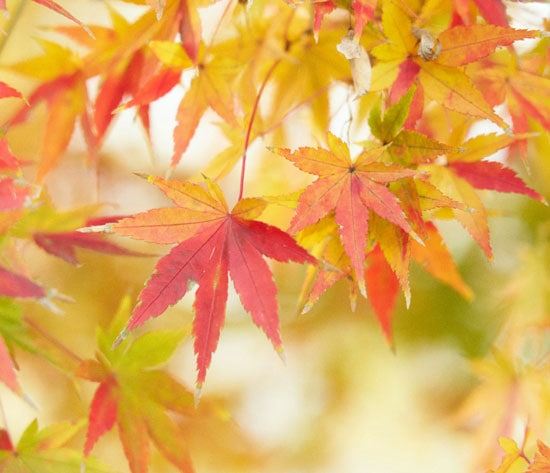
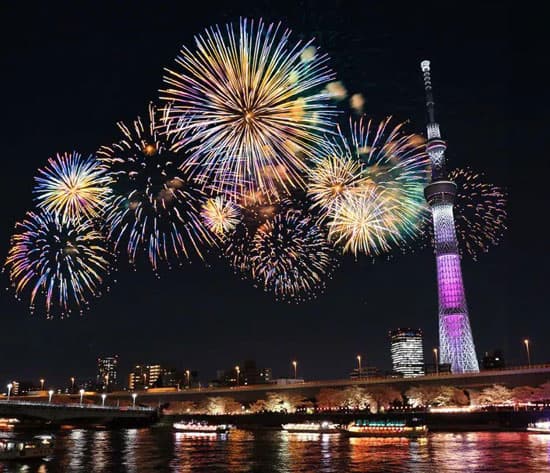
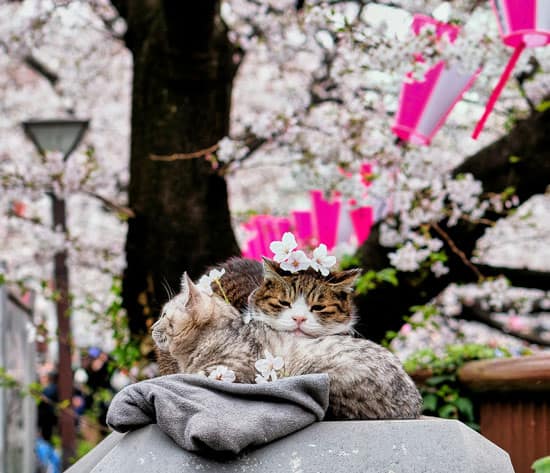
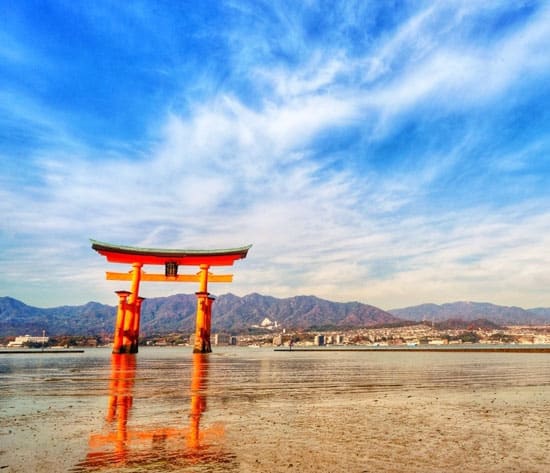
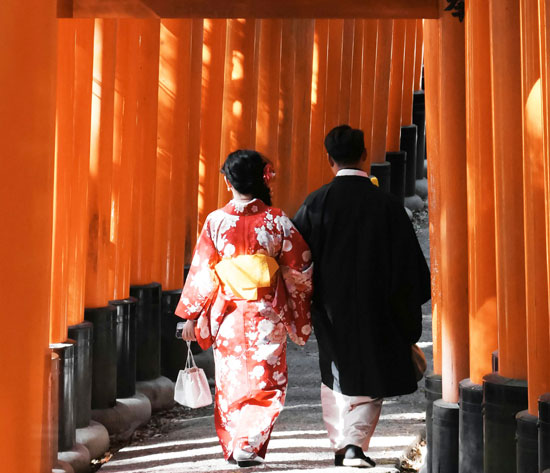
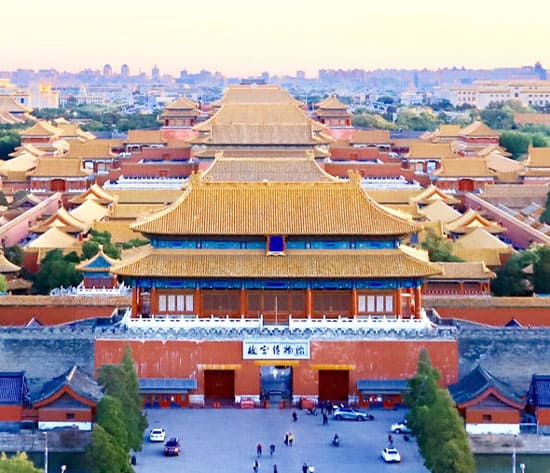
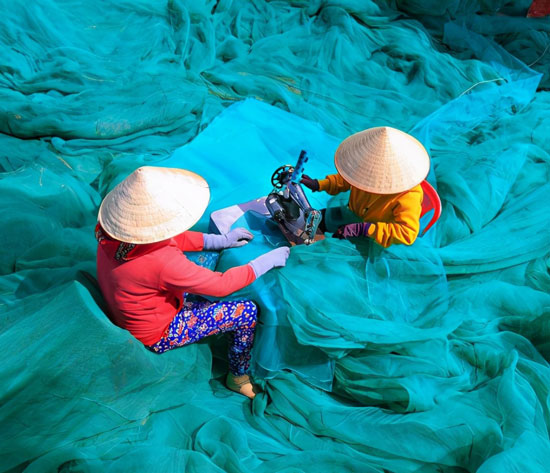
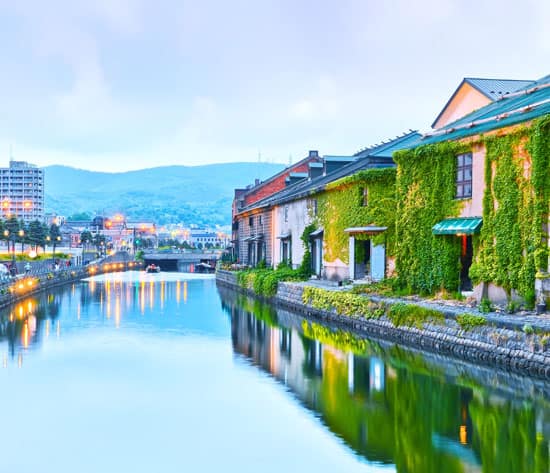
Have a Question?
You might see your comment appear on this page, but your email address and full name will not be published. Your personal information will remain confidential. Our Asia travel experts will get back to you as soon as possible. Required fields are marked *